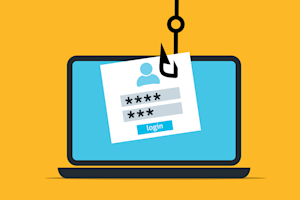In today's digital world, cyber threats are becoming increasingly sophisticated, making it more challenging for organizations to secure their sensitive data and systems. To combat these threats, a new security model called "zero trust security" has emerged.
Zero Trust security is an approach to cybersecurity that requires organizations to verify every access attempt, regardless of where it originates from. It assumes that all devices, users, and applications are untrusted, and continually authenticates and authorizes access to sensitive resources.
In this article, we'll explore the benefits of implementing Zero Trust security, including improved protection against data breaches, enhanced visibility and control, and more secure access to sensitive data and systems. By the end of this article, you'll have a better understanding of why zero trust security has become an essential component of any organization's cybersecurity strategy.
What is Zero Trust?
Zero Trust is an approach to cybersecurity that assumes all devices, users, and applications are untrusted and continually authenticates and authorizes access to sensitive resources. In contrast to traditional security models, which typically rely on perimeter-based defenses, Zero Trust requires organizations to verify every access attempt, regardless of where it originates from.
This approach provides a more comprehensive and effective way to manage access to data and systems, reducing the risk of data breaches and other security incidents.
How Does Zero Trust Work?
Zero Trust operates on the principle of “never trust, always verify.” Instead of granting automatic access based on network location, it continuously verifies user identities, device security, and access requests. This is achieved through multi-factor authentication (MFA), least privilege access, continuous monitoring, and strict enforcement of security policies. By requiring authentication at every access point, Zero Trust minimizes the risk of unauthorized access and data breaches.
Core Principles Behind the Zero Trust Security Model
The Zero Trust security model is built on the idea that no user or device should be trusted by default, regardless of whether they are inside or outside the network. To enforce this, organizations follow these core principles:
Verify Every Access Request: Users and devices must be continuously authenticated using multi-factor authentication (MFA), identity verification, and risk-based access controls.
Least Privilege Access: Users are granted only the minimum access necessary to perform their tasks, reducing the risk of unauthorized data exposure.
Micro-Segmentation: Networks are divided into smaller zones to limit movement in case of a breach, preventing attackers from gaining widespread access.
Continuous Monitoring and Analytics: Security teams track user behavior and access patterns to detect anomalies and prevent threats in real-time.
Encrypt Data Everywhere: Data should be encrypted both in transit and at rest to protect against cyber threats and unauthorized interception.
By implementing these principles, organizations can strengthen their cybersecurity posture and reduce the risk of breaches, even in complex IT environments.
Key Benefits of Adopting a Zero Trust Security Model (H2)
1. Improved protection against data breaches
One of the primary benefits of implementing Zero Trust security is improved protection against data breaches. By requiring authentication and authorization for all access attempts, zero trust security can prevent unauthorized users from accessing sensitive data and systems. This approach is in contrast to traditional security models, which often rely on a perimeter-based approach and assume that all traffic within the perimeter is trusted.
With zero trust security, organizations can protect against both external and internal threats. External threats can include cyber attacks from outside the organization, while internal threats can include insider threats and compromised accounts. By continually verifying and authorizing access attempts, zero trust security can prevent these threats from accessing sensitive data and systems.
Real-world examples of organizations that have benefited from zero trust security in terms of preventing data breaches include Google and Microsoft. Both companies have implemented zero trust security models and have reported significant improvements in their security posture. For example, Microsoft's implementation of zero trust security helped prevent a significant number of data breaches that would have been caused by compromised accounts.
Overall, implementing zero trust security can help organizations improve their protection against data breaches, which can have a significant impact on their reputation and financial stability. By requiring authentication and authorization for all access attempts, zero trust security can prevent both external and internal threats from accessing sensitive data and systems.
2. Enhanced visibility and control
Another benefit of implementing zero trust security is the enhanced visibility and control it provides over access to data and systems. With zero trust security, organizations can gain a more granular level of control over access attempts, and they can monitor all activity in real-time.
Traditional security models often provide limited visibility into access attempts and can make it difficult to detect and respond to potential threats. However, with zero trust security, organizations can monitor all access attempts, including those from untrusted devices and locations. This can help IT professionals identify and respond to potential threats in real time.
Zero Trust security also allows organizations to enforce access controls more granularly. This can include limiting access to specific resources or enforcing multi-factor authentication for certain types of access. Organizations can better manage and control access to sensitive data and systems by implementing these controls.
Zero trust security provides a more comprehensive and effective approach to managing access to data and systems. By providing real-time visibility and control over access attempts, organizations can better detect and respond to potential threats, while also enforcing access controls at a more granular level.
3. More secure access to sensitive data and systems
Zero trust security can also help organizations ensure more secure access to sensitive data and systems. One way it does this is by protecting against attacks that target privileged access. Privileged accounts, such as those belonging to administrators, are often targeted by attackers, who seek to gain access to sensitive data or systems. Zero trust security can prevent these attacks by requiring additional authentication and authorization checks for privileged access.
In addition to protecting against attacks on privileged accounts, zero trust security can also be used to secure remote access, bring-your-own-device (BYOD) policies, and cloud-based environments. These types of access are often challenging to secure, but zero trust security can provide a more comprehensive and effective approach. By requiring authentication and authorization for all access attempts, organizations can ensure that only authorized users and devices can access sensitive data and systems.
Furthermore, zero trust security can provide additional security measures for remote workers, who may access sensitive data and systems from untrusted locations or devices. By using zero trust security, organizations can enforce access controls and monitor activity in real-time, reducing the risk of data breaches or other security incidents.
Overall, zero trust security can provide a more secure approach to managing access to sensitive data and systems. By protecting against attacks on privileged accounts and securing remote access, BYOD policies, and cloud-based environments, organizations can ensure that their data and systems are protected from potential threats.
Zero Trust Use Cases
Zero Trust security is essential for organizations looking to strengthen their cybersecurity framework. Here are some key use cases where Zero Trust can be applied:
Securing Remote Work: Ensures employees can securely access company resources from any location while continuously verifying their identity and device security.
Protecting Cloud Environments: Prevents unauthorized access to cloud applications and services by enforcing strict authentication and access controls.
Preventing Insider Threats: Limits user privileges to only necessary resources, reducing the risk of data leaks from compromised or malicious insiders.
Safeguarding Third-Party Access: Vendors and contractors are given restricted, monitored access to minimize security risks associated with external users.
Strengthening Endpoint Security: Requires all devices to meet security compliance before accessing the network, reducing vulnerabilities from unmanaged or compromised endpoints.
By applying Zero Trust principles across these areas, organizations can minimize security threats and ensure stronger protection of sensitive data and systems.
Top Zero Trust Best Practices for Maximum Security
Implementing Zero Trust effectively requires a strategic approach to continuously verify and protect access to critical resources. Here are the top best practices for achieving maximum security:
Adopt Multi-Factor Authentication (MFA): Require users to verify their identity using multiple authentication factors to prevent unauthorized access.
Enforce Least Privilege Access: Limit user permissions to only the resources necessary for their role, reducing exposure to potential threats.
Continuously Monitor and Analyze Access Behavior: Use real-time analytics and AI-driven insights to detect unusual activity and mitigate risks.
Implement Micro-Segmentation: Divide the network into secure zones to restrict lateral movement and contain potential breaches.
Secure Endpoints and Devices: Ensure all devices comply with security policies before granting access, preventing compromised endpoints from introducing threats.
Encrypt Data at All Stages: Protect sensitive information by enforcing encryption for data in transit and at rest.
Integrate Zero Trust with Remote Access Solutions: Use secure remote desktop solutions like Splashtop to enforce Zero Trust policies while enabling seamless remote work.
By following these best practices, organizations can enhance their security posture, prevent cyber threats, and ensure safe access to resources across all environments.
How Does Splashtop Enhance Zero Trust Security for Remote Work?
Since day one, security has been Splashtop’s top priority. Splashtop as a remote access and remote support tool is trusted by a vast number of people, businesses, schools, and universities, which makes it imperative for users to be able to rely on Splashtop's capability to safeguard their sensitive information, data, and privacy.
That's precisely why we at Splashtop place a great deal of importance on security and are committed to making substantial investments to continuously enhance our infrastructure and security measures. Additionally, we have brought together the world's foremost experts in cybersecurity and compliance to assist us in further securing our platform.
(Learn more about Splashtop security and secure remote desktop software)
Despite the availability of more advanced remote access solutions, many companies still rely on outdated technology such as VPN for remote access. However, VPNs are not as secure as modern remote access platforms. They connect remote devices to the company network, potentially exposing it to cyber threats.
In addition, VPNs are challenging to set up, scale, and maintain, and many VPNs do not automatically install security updates and patches, leaving organizations vulnerable to attack.
Fortunately, a better alternative to VPN is available in the form of a zero-trust network access platform. Splashtop's remote access platform enables secure remote access to managed devices without the vulnerabilities associated with VPN. This approach provides users with access to work machines while maintaining robust security measures.
At Splashtop, we take security seriously, which is why our zero-trust security approach assumes that all devices, users, and applications are untrusted. This approach continually authenticates and authorizes access to sensitive resources, preventing unauthorized access attempts and reducing the risk of data breaches.
Our zero-trust security model includes advanced features such as multi-factor authentication, device authentication, and granular access controls. These measures work together to ensure that only authorized users and devices can access sensitive data and systems, significantly reducing the risk of potential threats.
By implementing Zero Trust security, we provide our users with secure and reliable remote access and remote support solutions. Our dedication to security ensures that our users can access their data and systems without worrying about potential cyber threats.
Get Started with Splashtop Secure Workspace (SSW) to Safeguard Your Business
IAdopting a Zero Trust security model is essential for protecting sensitive data, preventing cyber threats, and ensuring secure access to business resources. With evolving cybersecurity risks, organizations need a solution that enforces strict authentication, least privilege access, and continuous monitoring.
Splashtop Secure Workspace is designed to help businesses implement Zero Trust principles seamlessly. It provides secure remote access, identity verification, granular access controls, and encrypted data protection, ensuring that only authorized users can access critical systems and applications.
By integrating Splashtop Secure Workspace, businesses can protect against unauthorized access, enhance compliance, and streamline IT security without sacrificing productivity.
Take the next step toward a secure, Zero Trust environment—get started with Splashtop Secure Workspace today and safeguard your organization with enterprise-grade security.





